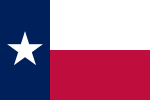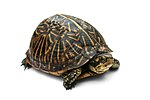Laurasia (/lɔːˈreɪʒə, -ʃiə/) was the more northern of two large landmasses that formed part of the Pangaea supercontinent from around 335 to 175 million...
47 KB (4,966 words) - 09:23, 11 July 2024
Pangaea (section Formation of Laurasia)
proto-Laurasia, proto-Gondwana, and the smaller Congo Craton. Proto-Laurasia and proto-Gondwana were separated by the Proto-Tethys Ocean. Proto-Laurasia split...
39 KB (4,697 words) - 07:36, 13 May 2024
defined as the ocean located between the ancient continents of Gondwana and Laurasia. After the opening of the Indian and Atlantic oceans during the Cretaceous...
23 KB (2,788 words) - 14:24, 6 August 2024
Carboniferous to form Pangea. It began to separate from northern Pangea (Laurasia) during the Triassic, and started to fragment during the Early Jurassic...
75 KB (7,823 words) - 21:20, 10 August 2024
years ago, Gondwana and Laurasia split apart due to the widening of the Atlantic Ocean. Finally and very soon afterwards, Laurasia itself split up again...
243 KB (22,212 words) - 18:53, 13 August 2024
Pannotia formed as Proto-Laurasia was added to Gondwana c. 600 Ma (left) and broke up 550 Ma (right) when Laurasia broke apart. View centred on the South...
20 KB (2,070 words) - 20:30, 24 March 2024
rodent fossil record dates back to the Paleocene on the supercontinent of Laurasia. Rodents greatly diversified in the Eocene, as they spread across continents...
138 KB (14,338 words) - 13:34, 11 August 2024
Jurassic, the supercontinent Pangaea had begun rifting into two landmasses: Laurasia to the north and Gondwana to the south. The climate of the Jurassic was...
230 KB (24,881 words) - 15:15, 10 August 2024
Prehistoric supercontinents Columbia Gondwana Kenorland Laurasia Nena Pangaea Pannotia Rodinia Ur Vaalbara Other prehistoric continents Amazonia Arctica...
5 KB (391 words) - 15:59, 11 July 2024
Prehistoric supercontinents Columbia Gondwana Kenorland Laurasia Nena Pangaea Pannotia Rodinia Ur Vaalbara Other prehistoric continents Amazonia Arctica...
26 KB (3,294 words) - 04:20, 23 June 2024
Early Jurassic it began to gradually rift into two separate landmasses: Laurasia to the north and Gondwana to the south. The global climate during the Triassic...
69 KB (7,584 words) - 17:18, 13 August 2024
years ago. It broke free into the Neo-Tethys Ocean and headed towards Laurasia. About 200 million years ago, the microcontinent of Iberia separated from...
5 KB (454 words) - 23:59, 26 January 2024
Mesoproterozoic and are about 1,600 million years old. This margin existed until Laurasia and Gondwana collided in the Pennsylvanian subperiod to form Pangea. Pangea...
256 KB (24,506 words) - 06:01, 13 August 2024
When Pangaea began to rift around 200 mya, North America became part of Laurasia, before it separated from Eurasia as its own continent during the mid-Cretaceous...
167 KB (13,302 words) - 23:18, 14 August 2024
are from the Late Cretaceous of Japan, and the genus was widespread in Laurasia during most of the Cenozoic, especially in Europe until the Pliocene. Hofmann...
2 KB (100 words) - 03:54, 25 October 2023
exception is smaller placentals such as rodents and primates, who left Laurasia and colonized Africa and then South America via rafting. In Africa, the...
23 KB (2,301 words) - 21:38, 27 May 2024
separate plates during the Mesozoic Era and the Tethys sea developed between Laurasia and Gondwana during the Jurassic Period. The Tethys was later squeezed...
104 KB (12,126 words) - 13:55, 15 August 2024
between the Yenisey River and the Lena River. It developed from fragments of Laurasia, whose rocks were mainly Precambrian crystalline rocks, gneisses, and schists...
27 KB (2,055 words) - 13:18, 4 August 2024
Matsumoto R, Evans SE (2010). "Choristoderes and the freshwater assemblages of Laurasia". Journal of Iberian Geology. 36 (2): 253–274. Bibcode:2010JIbG...36..253M...
95 KB (9,847 words) - 15:10, 10 August 2024
supercontinent Pangaea, which gradually split into a northern continent, Laurasia, and a southern continent, Gondwana. This created the passive continental...
41 KB (4,326 words) - 11:45, 3 July 2024
and terebratulid and rhynchonellid brachiopods. Breakup of Pangaea into Laurasia and Gondwana, with the latter also breaking into two main parts; the Pacific...
172 KB (9,499 words) - 03:27, 5 August 2024
during the Early Jurassic and continued through to the Late Jurassic in Laurasia. They competed alongside their more anatomically advanced tetanuran relatives...
71 KB (7,616 words) - 11:42, 14 August 2024
Oldest Known Dispersal Event of the Crown Pleurodira from Gondwana to Laurasia". Journal of Systematic Palaeontology. 15 (9): 709–731. Bibcode:2017JSPal...
126 KB (13,111 words) - 14:22, 12 August 2024
re-assembled into another supercontinent called Pangaea; Pangaea broke up into Laurasia (which became North America and Eurasia) and Gondwana (which became the...
112 KB (13,659 words) - 22:00, 13 August 2024
but mainly to Laurasia. Interchanges with Gondwana were rare and mainly "out-of-Africa" dispersals, whereas interchanges with Laurasia were numerous and...
33 KB (3,728 words) - 22:06, 13 August 2024
The Cimmeria continent rifted away from Gondwana and drifted north to Laurasia, causing the Paleo-Tethys Ocean to shrink. A new ocean was growing on its...
114 KB (11,778 words) - 04:42, 11 August 2024
probably originated somewhere 83 million years ago in the supercontinent Laurasia. Despite their long evolutionary history on Earth, the extant orchid diversity...
60 KB (6,346 words) - 21:28, 11 August 2024
Atlantic Basin began to form around 180 million years ago, when the continent Laurasia (North America and Eurasia) started to drift away from Africa and South...
17 KB (2,196 words) - 03:10, 23 June 2024
Matsumoto R, Evans SE (2010). "Choristoderes and the freshwater assemblages of Laurasia". Journal of Iberian Geology. 36 (2): 253–274. Bibcode:2010JIbG...36..253M...
97 KB (10,225 words) - 14:10, 10 August 2024
reassembled into another supercontinent called Pangaea; Pangaea broke up into Laurasia (which became North America and Eurasia) and Gondwana (which became the...
90 KB (8,790 words) - 05:55, 14 August 2024



























